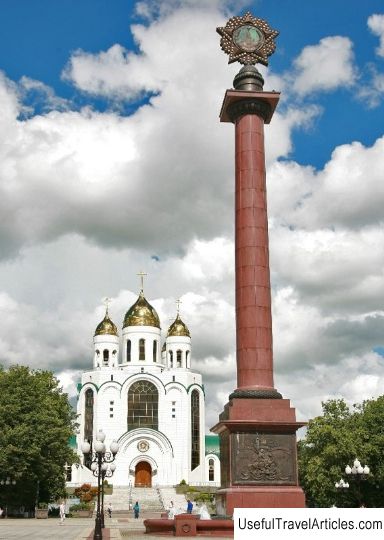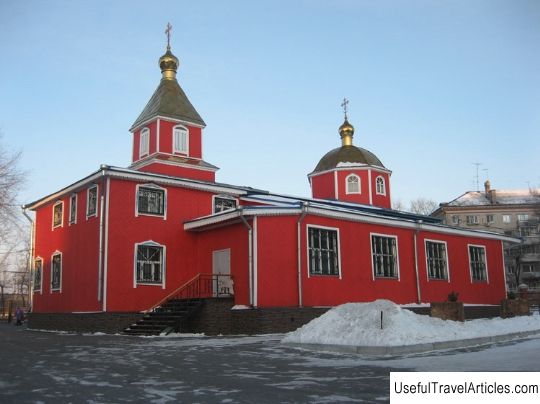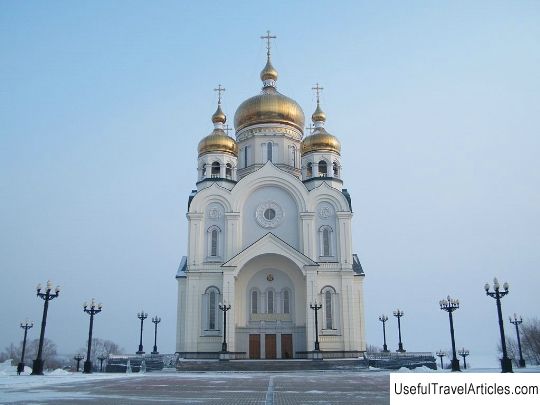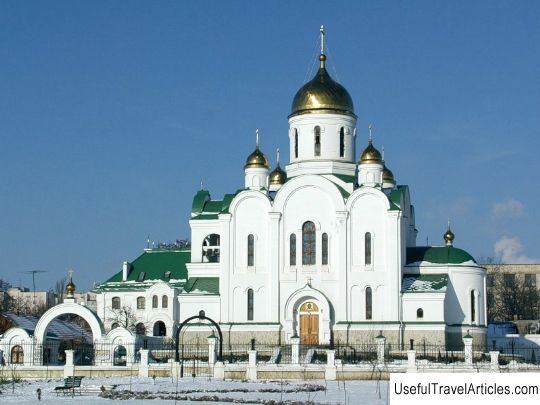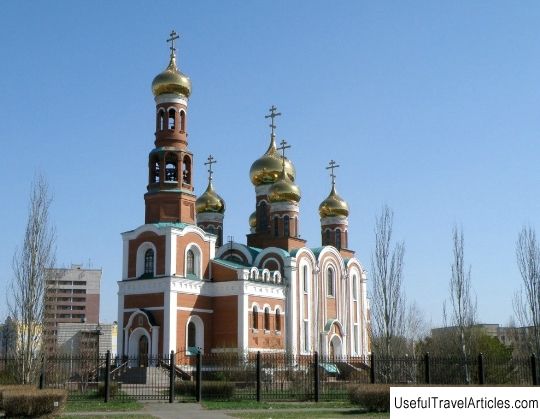Cathedral of Christ the Savior description and photos - Russia - Moscow: Moscow
Rating: 7,8/10 (5496 votes) 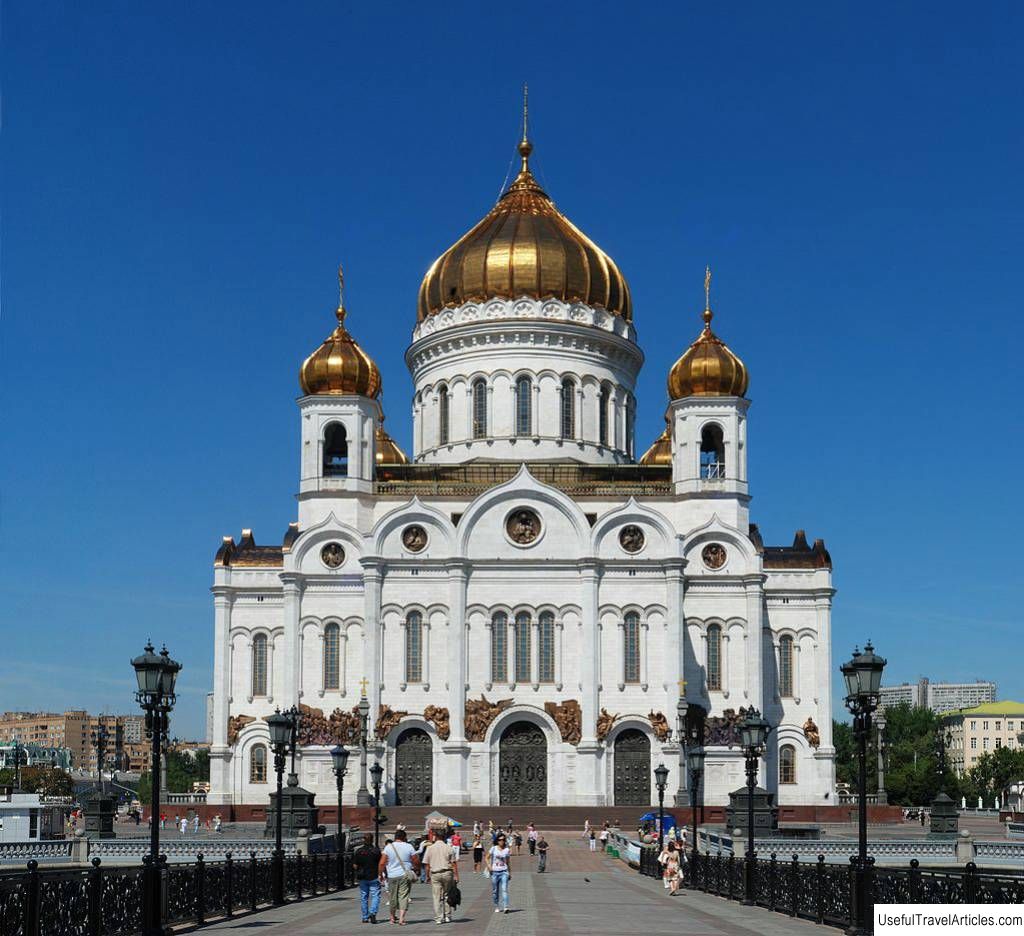
Cathedral of Christ the Savior description and photos - Russia - Moscow: Moscow. Detailed information about the attraction. Description, photos and a map showing the nearest significant objects. Photo and descriptionThe main Orthodox church in Russia is called Cathedral Cathedral of the Nativity of Christ . It is better known as the Cathedral of Christ the Savior, which was rebuilt in Moscow on Volkhonka instead of the one destroyed in 1931. The feast day is celebrated at the cathedral on January 7 in honor of Christmas. The history of the first churchThe victory in the Patriotic War of 1812 caused a rise in patriotic sentiments in the Russian army. One of the generals who participated in the war proposed building a temple that would become a memorial to all those who died on the battlefield with the Napoleonic army. General Pyotr Kikin's idea of reviving the tradition of erecting a sacred temple was received with enthusiasm , after all, a similar practice existed in Russia even in the pre-Mongol period. Churches and cathedrals in honor of the victory over the invaders have already been built both in Kiev and in Moscow. On December 25, 1812, Emperor Alexander I imperially commanded by his manifesto to build a temple in the name of Christ the Savior , because it was the providence of God, in the opinion of the people, that saved the Russian land from the French. A competition for the best project was announced, in which dozens of artists and architects from Russia and abroad took part. Among them were Andrei Voronikhin and Vasily Stasov, very famous by that time. As a result, the victory was won by the artist Karl Vitberg , who at the time of planning the construction was not even thirty years old. The greatness and grandeur of his plan have been compared to the Temple of Solomon. For the construction they chose Vorobyovy Gory , called by Emperor Alexander I "the crown of Moscow". October 12, 1817 marks five years since the liberation of the capital from the French. On this symbolic day, the first temple on Vorobyovy Gory was solemnly laid in the presence of members of the imperial family and foreign monarchs. Excavation work, improvement of the drainage canal, delivery of stone materials to Vorobyovy Gory - all these stages of the project implementation required significant financial investments and human resources. For the construction, about 20 thousand serfs were attracted and more than 16 million rubles were spent, but even the zero cycle was not completed in seven years. In addition, it turned out that the soil at the selected location does not have the required reliability. The project was stopped, and those involved in the damage to the treasury, was fined a million rubles. The architect Vitberg went into exile in Vyatka. Temple designed by Konstantin Ton New the place chosen for the construction of the cathedral was on Volkhonka . To implement the project developed by the architect Ton, the Alekseevsky Convent , which had existed in the center of Moscow since the 17th century, had to be demolished. On this occasion the abbess of the monastery uttered a prophetic phrase that the chosen place would sooner or later be empty again. In 1837, the first stage of construction work began, which had been going on for over forty years. The outer scaffolding was dismantled in 1860, but finishing continued for another two decades. The interiors of the temple were decorated by famous Russian artists - Vasily Vereshchagin, Ivan Kramskoy and Vasily Surikov . The high reliefs were made by the sculptors Alexander Loganovsky and Nikolay Romazanov . Cathedral of Christ the Savior became the tallest structure in the capital (103.5 m) and accommodated more parishioners than any other religious building of the Russian Empire. It was solemnly consecrated in May 1883. The ceremony was attended by Tsar Alexander III. Before the revolution, the temple served as a venue for coronation celebrations and events on the occasion of national holidays. With the coming to power of the Bolsheviks, funding for churches stopped and the cathedral existed on private donations, until in 1931 it was decided to build a Palace of Soviets in its place. The fragments of the blown up cathedral were taken apart for about one and a half years. The builders mastered the foundation of the future Palace of Soviets only by 1939, but with the beginning of the war, the work was suspended. Later, anti-tank hedgehogs were made from the metal structures of the palace, and then the building that had just begun to grow was completely dismantled. Until the beginning of the 60s, the place was empty, until the city authorities decided to build a swimming pool. The abbess's prophecy continued to come true. Return of the temple on VolkhonkaAfter 1000 On the anniversary of the Baptism of Rus, the idea of an initiative group advocating for the restoration of the cathedral found a response from government agencies. The established fund has started collecting funds and donations. A granite foundation stone appeared on Volkhonka at the end of 1990, and construction work started in the spring of 1994. The project was started by architects M. Posokhin and A. Denisov , and finished by Zurab Tsereteli . Tsereteli's ideas have been criticized more than once during construction. The changes he made to the design of the temple caused a lot of controversy and criticism, since the details of the external design did not correspond to the original of the 19th century. As a result, n the new cathedral was recreated as a "conditional external copy" of the temple destroyed in 1931. The modern Cathedral of Christ the Savior The largest cathedral of the Russian Orthodox Church can accommodate about 10 thousand people at the same time . His project was carried out in accordance with the principles of the Russian-Byzantine architectural style. On the plan, the cathedral is an equilateral cross. The height of the structure is 103 meters, the interior space is 79 meters. The cathedral complex includes three main parts: - Upper Cathedral of Christ the Savior with three thrones . The main altar is consecrated in honor of Christmas, the southern one - in honor of Nicholas the Wonderworker and the northern one - in honor of Alexander Nevsky. - The Transfiguration Church, called the Lower Temple , was built in memory of the Alekseevskaya monastery, demolished on Volkhonka in 1837. Three altars of the church are dedicated to the Transfiguration of the Lord, Alexy the Man of God and the Tikhvin Icon of the Mother of God. - Halls of church cathedrals and the Supreme Church Council, a museum, refectory and service premises are located in the stylobate part of the complex. The walls of the Lower Corridor are decorated with marble panels, each of which depicts more than 70 battles that took place on the territory of the Russian Empire during the war of 1812. The southern and western walls of the temple are dedicated to the battles that took place outside the Fatherland. paintings and gold leaf were used for interior decoration. Especially monumental look compositions by Vasily Nesterenko - "Entry into Jerusalem" on the side of the western gallery and "Baptism of the Lord" - on the north. The domed part of the ceiling is occupied by the Fatherland fresco depicting the Lord and baby Jesus. The pylons of the temple tell about the earthly life of the Savior. The rector of the Cathedral of Christ the Savior is Patriarch of Moscow and All Russia . In addition to ordinary divine services, various religious rites are held in it, the Bishops' Council of the Russian Orthodox Church is held, at which important decisions are made. People who are especially significant for Russian history, culture and literature are buried in the church. The cathedral is often mentioned in literary works, it is portrayed by modern artists. Shrines and relics of the temple The cathedral contains many Orthodox shrines to which believers make pilgrimages. You can see several images that are considered miraculous: The Vladimir Mother of God, the Smolensk-Ustyuzhensk Mother of God, the icon of the Nativity of Christ , which was brought from the church in Bethlehem. Particles of the robe of Christ and the robe of the Mother of God are especially revered Orthodox relics that are in the temple, as well as the relics of the Apostle Andrew the First-Called and the head of St. John Chrysostom. In the main altar you can see the throne of St. Tikhon, Patriarch of Moscow and All Russia . The relics of St. Philaret, bishop of the Russian Orthodox Church, rest in a shrine, installed south of the Royal Doors. Orthodox shrines from other churches and monasteries are temporarily exhibited in the cathedral, to which mass pilgrimages are made. Six paintings by Vasily Vereshchagin On both sides of the throne of Patriarch Tikhon one can see six colossal canvases painted by Vasily Petrovich Vereshchagin , the namesake of the author of the famous "Apotheosis of War". His work was formed under the influence of the painting style of Karl Bryullov. Six canvases were created by Vereshchagin in the late 70s of the XIX century for the Cathedral of Christ the Savior. In 1931, they miraculously survived, thanks to the enthusiasm of art critics who took part in dismantling the rubble at the site of the blown up cathedral. The works were sent to Leningrad, where they remained for a long time in a museum dedicated to the history of religion and atheism and arranged by the Bolsheviks in the Kazan Cathedral. In the 90s of the last century, the canvases were restored and returned to the temple. Six of Vereshchagin's paintings are distinguished by their particular simplicity, the accuracy of the image and the utmost asceticism of the compositions. The works illustrate the last hours of the earthly life of the Savior. Each of them is intended for worshipers and is close to the best examples of icon painting in terms of the plot composition and design. Wall and under-dome paintings by Vasily Petrovich Vereshchagin can also be seen in the Church of St. Mary Magdalene in Jerusalem and in the Assumption Cathedral of the Kiev-Pechersk Lavra. Some mosaics of St. Isaac's Cathedral in St. Petersburg are made according to the artist's sketches. Prophecy or accident?In the 70s-80s of the last century, the artist Valery Balabanov painted the painting “Swimmer ", depicting on it the reflection of a nonexistent cathedral in the mirror of the" Moscow "pool. Later they began to perceive it as a prophecy. Art critics and the Russian Orthodox Church were sure that Balabanov predicted the restoration of the temple. Today the painting is on display in the Museum of the Cathedral of Christ the Savior. Every visitor can see the work and decide for himself whether it was a prophecy. Note:
           We also recommend reading University of Oxford description and photos - Great Britain: Oxford Topic: Cathedral of Christ the Savior description and photos - Russia - Moscow: Moscow. |
